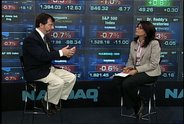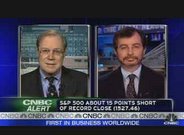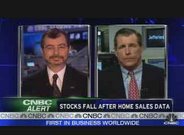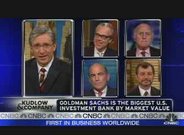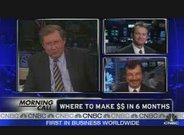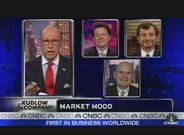It’s The Demand, Stupid
“One thing you’ve got to understand is that we do not hire workers for the sake of hiring workers. We hire them to do jobs,” Mr. Goodnight said. “If we don’t have the work coming in, nothing will make me hire another person.”
Frank W. Goodnight, President, Diversified Graphics, a publishing company in Salisbury, N.C., quoted in today’s NY Times article, “A Slowdown for Small Businesses”
This morning, two reports (see links below) were published that illustrate the economic dilemma the US (and, therefore, the global) economy finds itself in – there just ain’t enough demand out there.
This is nothing new. But with the government stimuli clock running out, the viability of an organically driven, private sector led sustainable economic expansion hangs in the balance. The recent US economic data has put a sharp spotlight on the decelerating US economy. The crisis in Europe is stuck in its own feedback loop, with the outcome quite uncertain. Then, there’s the hot, hot, hot emerging markets with inflation topping the economic list of worries (to be sure, there are lots of other risks that many bullish investors choose to ignore).
With US growth decelerating, the chosen phrase is soft patch. The economic soft patch, however, could quickly turn to quicksand. And, given both the limited remaining resources in the governmental fiscal and monetary bag (not to mention the toxic political atmosphere and the consequences of austerity in a time of weak demand), the quicksand the global economy would find itself entrapped in could be far worse than most investors currently anticipate.
So, what do the two reports tell us about the state of the US economy? For one, it says that in the business world it’s a tale of two economies – one that benefits from the global growth story, the other primarily on US domestic demand. However, herein lies the dilemma for all: In the end, global growth is dependent on end user demand, which is centered on developed economies like the US as developing markets' end user demand is both too small and years away from making a significant impact on global end user demand. This is fairly clear cut to developed economies but is far less appreciated when it comes to developing economies.
Developing economies, like China, depend on two engines of growth – fixed domestic investment and exports. Fixed domestic investments eventually require end user demand. You can build only so many new ghost towns before the money runs out. Excess inventory is the chicken that eventually comes home to roost. (Tech bubble, anyone?)
As for the other engine of emerging markets growth, exports, well that depends primarily on…you guessed it, end user demand in developed economies. And the problem there lies in the fact that end user demand in developed economies (like the US and Euroland) relies on wage growth and higher employment. And that is mainly resides in the small business arena.
I’ll give you one guess as to which report published today painted a less than rosy picture? (Hint: it isn’t the big boy’s report.)
Investment Strategy Implications
As for the stock market - it may all work out. Then again, it might not. Stocks locked in the first of a potential 3 stage march to a bear market (stage 1 – sideways; stage 2 – rollover; stage 3 – breakdown) may actually resolve itself to the upside, which would make the current market action the prelude to higher highs (thereby showing that sideways was little more than a consolidation phase, which all bull markets go through from time to time).
No one knows for sure how the current sideways market action will resolve itself. I would suspect, however, that based on how the past two bear markets came about (topping process in time and manner), we should have a very good idea before this summer is over (when price and its two key moving averages – 50 and 200 day might converge) whether consolidation or distribution was the real story of our multi month sideways markets.
In regards to the economy, one thing is certain: if end user demand turns negative, the environment will become very bad very quickly. And then all that will be needed is some event somewhere (in the economic, financial, or political realm) to turn bad to ugly.
The task for President-elect Romney will not be an easy one.
Here are links for the two reports:
Good
Business Roundtable
Not so good
NFIB
One relies primarily on global growth, the other primarily on domestic demand.
































